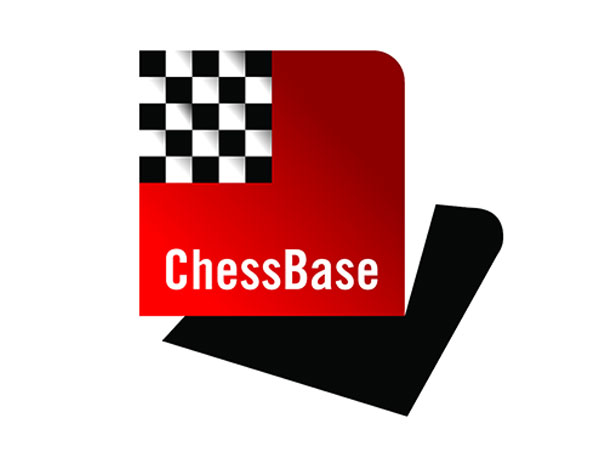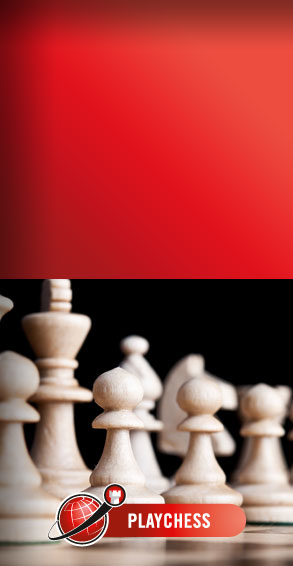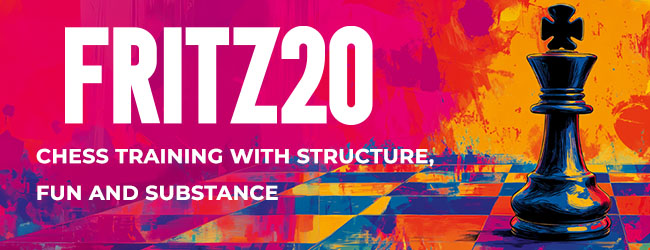
London Chess Classic 2011
The 2011 London Chess Classic is taking place in the Olympia
Conference Centre from Saturday, December 3rd until Monday, December 12th,
starting at 14:00h London time each day (final round 12:00h). Time controls
are classical forty moves in two hours, then twenty moves in one hour and thirty
minutes for the rest of the game. A win is counted as three points, a draw as
one, and a loss zero. Tiebreaks: 1) number of wins, 2) number of wins with Black,
3) result of the individual game between the tied players. In the unlikely event
that there is still a tie then: 4) 2 x 15'+2" games, and if necessary then
5) an Armageddon game: 6'+2" vs 5'+2" with draw odds for Black. If
there is a tie involving more than two players then the Rapid games will be
conducted as a double round all play all. The total prize fund is €160,000
before tax.
Black is more than okay
Round four report by John Saunders
Round 4:
Tuesday, December 6, 2011 |
Magnus Carlsen |
½-½ |
Vladimir Kramnik |
Michael Adams |
0-1 |
Nigel Short |
Vishy Anand |
0-1 |
Hikaru Nakamura |
David Howell |
0-1 |
Luke McShane |
Levon Aronian (bye) – assisting
commentary |
England’s Luke McShane leads world number one Magnus Carlsen on the ‘black
wins’ tie-break after the pulsating fourth round of play at Olympia on
6th December. Football is always pinching chess metaphors so it’s time
to get our own back: all the games featured ‘end to end stuff’ while
Anand-Nakamura was a game of two halves. And finally Nigel Short got the ball
in the back of the net at the Classic.
 Did
anyone spot my ‘deliberate error’ yesterday? I told you that there
had been five decisive games to the end of round three whereas in fact there
had been six. There was one decisive game in round one, two in round two and
three in round three. Logically, there should have been four in round four,
but in fact there were ‘only’ three again, making nine out of sixteen
games so far. This is an amazing percentage for an elite event and we have to
congratulate all the players for going at it hammer and tongs yet again.
Did
anyone spot my ‘deliberate error’ yesterday? I told you that there
had been five decisive games to the end of round three whereas in fact there
had been six. There was one decisive game in round one, two in round two and
three in round three. Logically, there should have been four in round four,
but in fact there were ‘only’ three again, making nine out of sixteen
games so far. This is an amazing percentage for an elite event and we have to
congratulate all the players for going at it hammer and tongs yet again.
Pride of place must go to US number one Hikaru Nakamura for a courageous fight-back
in his game against Vishy Anand. The circumstances of the game make it all the
more commendable. He was sitting opposite his fourth consecutive 2800+ opponent
(only the second player ever to do this in tournaments – Ivanchuk in Moscow
was the first) and this time it was the world champion, and he (Hikaru) had
black. And don’t forget it came on the back of the Carlsen Inquisition
the day before (unlike in the Monty Python sketch, everybody expects
the Carlsen Inquisition, but it didn’t make the experience any easier).

Live by the sword and die by the sword – US GM Hikaru Nakamura
Hikaru’s first act of courage was to wheel out the King’s Indian
Defence. Viktor Korchnoi was in the VIP room with a number of other GMs and
I imagine he would have pulled a face. Viktor is (to put it mildly) antipathetic
to this defence and used to love crushing people who dared to play it against
him, often adding scathing comments about it during the post mortem for good
measure.
The game proceeded down the Classical Main Line, with White shoving his queenside
pawns forward while Black does the same with his kingside pawns. From the Black
perspective, the trouble is that White often gains the centre too and this is
what happened here. Despite his menacing kingside pawns, Black’s pieces
are often pegged to the back two ranks as the white pieces occupy holes in the
position. As Hikaru said in his post-match tweet: “Live by the sword and
die by the sword. I wonder how many of these games I can play in the King’s
Indian Defence before I die of a heart attack?” All King’s Indian
players can relate to that!
Soon Vishy Anand was all over Hikaru like a cheap suit. But the trump card
for the defender in these positions is that, though White can get a big position,
they are very hard to calculate for the attacker. One wrong step and Black gets
out of jail. Not only that, many of the resultant positional factors favour
Black. It’s an opening for gamblers but in practice the odds are not bad.
Looking at it from Black’s point of view, Nakamura himself put this rather
more succinctly: “I attack and if it works, it works, if it doesn’t
I lose horribly and look like an idiot. The onus is on Vishy to find all the
right moves.”
That final sentence is key. Of course, the people at home watching with an
engine see Vishy’s position and a +2 or +3 engine assessment and think
White is winning. Maybe this is true for a computer but for a human –
even a world champion - it is damnably difficult. I sat and watched the denouement
of this game in the VIP room with the likes of Korchnoi, Speelman, Nunn, Hodgson,
etc, and they couldn’t agree about the right way to handle it.

Who's the commentator here? Vladimir Kramnik
In the commentary room, Messrs King and Trent couldn’t figure it out
either. Lawrence Trent cheekily asked Vlad Kramnik for his assessment of the
game and the great Russian cleverly ducked the question with a wave of his hand
and a twinkle in his eye: “you are the commentator here!”
This truly is the wonder of chess – it continues to baffle, mystify and
infuriate all its adherents, even the top GMs, years after computers have supposedly
‘solved’ it. No need to tinker with the rules – it’s
hard enough as it is. Seeing live chess also gives a tremendous insight into
the hit or miss decision-making process, which is sometimes obscured in annotations
where games are depicted as consisting of a single, logical plan, smoothly executed.
This is just science fiction. Real-life chess is rarely like this. The UK TV
quiz show QI (standing for ‘Quite Interesting’) has a nice
feature whereby panellists are asked general knowledge questions to which there
is no known answer. They are supplied with a sign to hold up with the words
‘nobody knows’ and get extra points for holding it up at the right
time. We’re thinking of supplying our commentators with these signs. It’s
the ‘nobody knows’ questions which make chess more than ‘quite
interesting’.

Visibly elated: Nakamura discusses the game with GM Danny King
So, perfectly understandably, Vishy went wrong in a very hard position and
the position turned round. It was still very hard to win for Black but Hikaru
stuck to his task and brought home the points. His four-day master class with
the four 2800+s was finally over and he had made a plus score. Also, he was
the first US player to claim the scalp of a reigning world champion in something
like two decades. He was visibly elated and an audience which had warmed to
his courage and honesty in adversity the previous day gave him a great reception
in the commentary room. Club players could perhaps relate better to a slugging
match where the players couldn’t hope to calculate all the variations
rather than the holy perfection of a Carlsen grind. “I was in one of these
moods after yesterday's loss to Magnus where I felt like playing something exciting
and I didn't really care if I won or lost – so I just took a chance.”
Again, we all know what that feels like. That is why Hikaru is a player’s
player.

While all the excitement of the Anand-Nakamura game was going on, there was
another turnaround in the Howell-McShane game. It started with the moves 1 e4
e5 2 Nf3 Nc6 3 d4 cxd4 4 Nxd4 and now 4...Bb4+!?. A few years ago, if someone
did that against you in a club game, you’d think he was a duffer, losing
a tempo with his bishop, but the point is that after 5 c3, White can no longer
put his knight on c3. It has become one of the main lines of the Scotch, with
Aronian, Adams and Vallejo Pons playing it, as well as late iconoclasts such
as Tal and Miles.

David Howell and Luke McShane in the press conference
David Howell seemed to have an edge for a while but he lapsed into his usual
time pressure (though this time it was mutual) and the position was level when
he was tempted to try an extravagant combination to exploit Luke McShane’s
back rank. Luke only had one defence – but one is all you need and he
found it. Game over. This win took Luke into a joint lead with Magnus Carlsen,
and he is technically ahead on tie-break, having won two games with black. Interestingly,
Black has now won five games to White’s four in the tournament so far.
Vladimir Kramnik was next in line for the Carlsen Inquisition. I was toying
with a different analogy, depicting Magnus as a dentist examining his ‘patients’
for ‘cavities’. As usual the young man aimed for some ‘non-theoretical
theory’ (if that makes sense), choosing a particularly arid line of the
Nimzo-Indian. Dry as dust – you could almost see the tumbleweed blowing
across the largely deserted board. It didn’t look like anything much happened
but you can be pretty sure that was only because there was a formidable player
in charge of the black pieces. Magnus didn’t find any ‘holes’.
Anyone else in the Norwegian’s dentist chair and they might have suffered
a drilling or a painful extraction of points. Vlad got off with a scaling and
a light polish.

Kramnik (right) discussing his survival of the Carlsen Inquisition
Having said it was ‘dry’, there was plenty going on below the surface,
amongst the moves which didn’t get played. The best way to follow this
game is to watch the relevant video in which the two adversaries ask each other
‘what do you do if I do this?’ and answer each other with nods and
knowing looks, acknowledging all the dirty tricks and traps they set along for
each other along the way like a couple of Harry Potter wizards.
Finally, the showdown between England’s long-time numbers one and two.
Nigel moved above Mickey a year or so ago but he’s now down at number
two again, and finished runner-up on tie-break at this year’s British
Championship. So there was plenty of prestige at stake as there always is when
they meet across the board.

The game started (Adams, above, was White) 1 e4 e6 2 d4 d5 3 Nd2 h6!? Not totally
unprecedented: Morozevich and Sadler have played it, while Nigel himself used
it, unsuccessfully, when facing the ex-English, now Aussie, IM Gary Lane at
the 2004 Olympiad. Levon Aronian’s comment was “It avoids theory,
and it puts pressure on White. If you don’t win the game, you’re
going to be ridiculed.” However, Viktor Korchnoi’s comment in the
VIP room on seeing 3...h6 was more dismissive: “switch the game!!”
But Mickey Adams’ follow-up seemed insipid. On move 16 he weakened the
squares in front of his king with g2-g3. “If you have to play that, your
opening strategy has failed,” said Aronian in the VIP room. Nigel gradually
assumed the initiative and held on to it. Just after the time control he gave
up the exchange for pawns and some more attacking chances. It still wasn’t
over but he continued to play extremely well to win the game. A great technical
effort: it was his first win in the three London Classic tournaments and will
be very welcome for that.

Unfortunately, the game ended so late that we didn’t get a post-match
commentary session or a sound-bite from Nigel (above). Well, I’ll have
to manufacture one. We started with a football theme so let’s end on one
and have Nigel voice a standard football cliché (though I’m sure
he would have been much funnier than this): “I got the ball... and I put
it in the back of the net. So that’s one in the eye for the knockers who
said I was finished!”
Pictures by Pascal Simon
Standings after four rounds (London scoring)

Standings after four rounds (traditional scoring)

Schedule and results
| Round
1: Saturday, December 3, 2011 |
| Vladimir Kramnik |
½-½ |
Hikaru Nakamura |
| Levon Aronian |
½-½ |
Luke McShane |
| Magnus Carlsen |
1-0 |
David Howell |
| Michael Adams |
½-½ |
Vishy Anand |
Nigel Short (bye) – assisting
commentary |
|
| Round
2: Sunday, December 4, 2011 |
| David Howell |
½-½ |
Michael Adams |
| Luke McShane |
½-½ |
Magnus Carlsen |
| Hikaru Nakamura |
1-0 |
Levon Aronian |
| Nigel Short |
0-1 |
Vladimir Kramnik |
Vishy Anand (bye) – assisting
commentary |
|
| Round
3: Monday, December 5, 2011 |
| Levon Aronian |
1-0 |
Nigel Short |
| Magnus Carlsen |
1-0 |
Hikaru Nakamura |
| Michael Adams |
0-1 |
Luke McShane |
| Vishy Anand |
½-½ |
David Howell |
Vladimir Kramnik (bye) –
assisting commentary |
|
| Round
4: Tuesday, December 6, 2011 |
| Magnus Carlsen |
½-½ |
Vladimir Kramnik |
| Michael Adams |
0-1 |
Nigel Short |
| Vishy Anand |
0-1 |
Hikaru Nakamura |
| David Howell |
0-1 |
Luke McShane |
Levon Aronian (bye) –
assisting commentary |
|
| Wednesday,
December 7, 2011 Rest day |
|
| Round
5: Thursday, December 8, 2011 |
| Hikaru Nakamura |
|
David Howell |
| Nigel Short |
|
Vishy Anand |
| Vladimir Kramnik |
|
Michael Adams |
| Levon Aronian |
|
Magnus Carlsen |
Luke McShane (bye) – assisting
commentary |
|
| Round
6: Friday, December 9, 2011 |
| Michael Adams |
|
Levon Aronian |
| Vishy Anand |
|
Vladimir Kramnik |
| David Howell |
|
Nigel Short |
| Luke McShane |
|
Hikaru Nakamura |
Magnus Carlsen (bye) –
assisting commentary |
|
| Round
7: Saturday, December 10, 2011 |
| Nigel Short |
|
Luke McShane |
| Vladimir Kramnik |
|
David Howell |
| Levon Aronian |
|
Vishy Anand |
| Magnus Carlsen |
|
Michael Adams |
Hikaru Nakamura (bye) –
assisting commentary |
|
| Round
8: Sunday, December 11, 2011 |
| Vishy Anand |
|
Magnus Carlsen |
| David Howell |
|
Levon Aronian |
| Luke McShane |
|
Vladimir Kramnik |
| Hikaru Nakamura |
|
Nigel Short |
Michael Adams (bye) –
assisting commentary |
|
| Round
9: Monday, December 12, 2011 |
| Luke McShane |
|
Vishy Anand |
| Hikaru Nakamura |
|
Michael Adams |
| Nigel Short |
|
Magnus Carlsen |
| Vladimir Kramnik |
|
Levon Aronian |
David Howell (bye) – assisting
commentary |
|
All games start at 2 p.m. or 14:00h British time = 15:00h CET, 17:00h Moscow,
7:30 p.m. Chennai, 22:00h Beijing, 01:00 a.m. Melbourne, 03:00 a.m. Auckland
(sorry Murray!), 6 a.m. San José, 9 a.m. New York. You can check your
location here.
Naturally the games will be covered live on the official web site (below) and
on Playchess. Stand by for further details on Saturday. The games of the final
round start two hours earlier.
Links
The games are being broadcast live on the official
web site and on the chess server Playchess.com.
If you are not a member you can download a free Playchess client and get
immediate access. Or you can get our latest Fritz
13 program, which includes six months free premium membership to Playchess. |
|
























